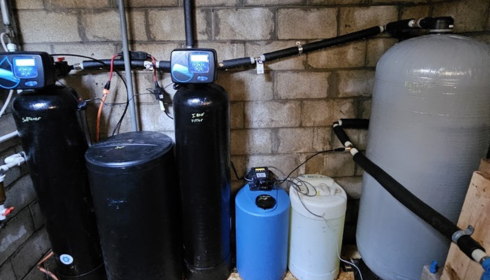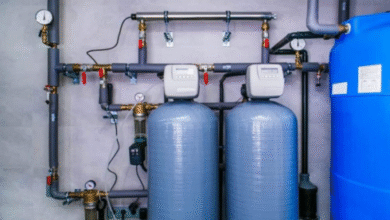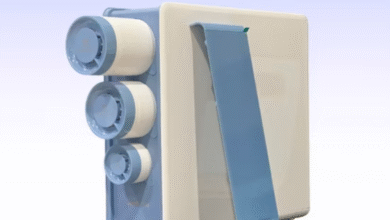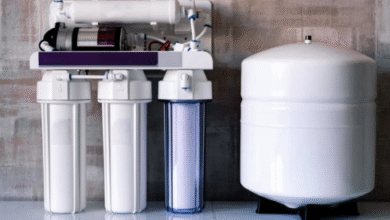When Iron Sneaks Into Your Water: What South Lyon Homeowners Should Know

There’s something strangely unsettling about turning on the tap and noticing that your glass of water looks just a little off. Maybe there’s a faint orange tint, or the taste reminds you of rusty pipes. If you live in South Lyon or really anywhere across Michigan, chances are you’ve run into this before. Iron in groundwater isn’t exactly rare, but that doesn’t make it any less frustrating for homeowners who simply want clear, good-tasting water. And if you’ve ever scrubbed reddish stains off sinks or battled stiff laundry, you know just how stubborn this mineral can be.
For folks in our corner of Michigan, iron in well water South Lyon MI is one of those everyday problems that doesn’t get talked about nearly enough. City water users might be spared some of the drama, but private well owners see it firsthand — especially in older wells or areas with higher natural mineral content. It’s not dangerous in small amounts, but it’s certainly annoying, and it can wear down your appliances and patience alike.
The Many Faces of Iron in Water
Here’s the thing: not all iron in water is the same. Sometimes it’s dissolved, totally invisible until it oxidizes and leaves behind orange streaks. Other times, it shows up as sediment, little reddish particles that settle at the bottom of your glass. And then there’s the type that combines with bacteria, which can create slime in your pipes. None of it feels particularly pleasant.
What’s tricky is that iron behaves differently depending on the conditions of your water. Some homeowners try store-bought filters, only to find they clog up way too fast. Others notice their water softener seems to help for a while, but it’s not designed to handle high levels of iron long-term. It’s one of those issues where guessing your way through rarely works.
Why It Matters More Than Just Aesthetic
Let’s be honest — people usually notice the cosmetic side first: rusty stains in toilets, discolored laundry, or that metallic aftertaste in coffee. But over time, iron can do real damage. It can clog pipes, shorten the lifespan of water heaters, and coat your plumbing with mineral buildup that’s a nightmare to reverse. If you’re investing in appliances or updating your home, the last thing you want is untreated water quietly undoing all that effort.
That’s why professionals stress the importance of testing. Before you throw money at a random product, knowing exactly what type of iron you’re dealing with makes the difference between fixing the problem and just patching it up temporarily.
A Local Perspective: South Lyon and Beyond
South Lyon has its share of beautiful neighborhoods, but like much of Michigan, groundwater here naturally carries higher mineral loads. Wells tap directly into aquifers, which means whatever is in the local geology — iron included — makes its way into your faucet. And since every well is a little different, what works for one household might not work for another.
Some homeowners find success with simple cartridge filters, while others need a dedicated treatment system. In fact, many choose to install a whole-house iron filter for well water Michigan specialists recommend, designed to handle the specific conditions found in our region. It’s not about overcomplicating things; it’s about finding something that lasts longer than a quick fix and actually improves day-to-day living.
Sorting Through the Solutions
If you start researching iron removal, you’ll quickly find yourself in a sea of options: oxidation filters, aeration systems, water softeners with iron media, chemical injection setups, and more. The good news is there isn’t just one “correct” answer — the right system depends on your water test results.
For example:
- Dissolved iron often responds well to oxidation or air injection systems.
- Particulate iron may be better caught by sediment filters.
- Iron bacteria, the slimy culprit, usually needs a stronger treatment like chlorination combined with filtration.
The downside? Without testing, you might end up spending money on the wrong approach. It’s like trying to fix a car problem without ever popping the hood. A quick lab or in-home test usually pays for itself by pointing you toward the right system.
Everyday Relief (and Peace of Mind)
Imagine not worrying about scrubbing your shower every few days, or your favorite white shirts coming out of the washer with an orange tint. For many families, the relief of cleaner water goes beyond convenience — it feels like regaining control over your home. And while iron isn’t the scariest contaminant out there, the comfort of knowing your water is truly clean shouldn’t be underestimated.
That’s why local experts often highlight the best iron removal system South Lyon homeowners can count on. It’s not about selling fancy gadgets; it’s about matching the treatment to the water so the problem stays solved. When you see the difference in taste, clarity, and even the way your appliances hold up, you realize it was never just about stains — it was about improving daily life.
Final Thoughts
Iron in your water isn’t a personal failing, and it’s not something you should just “put up with.” It’s a natural part of living in a region with mineral-rich groundwater. But natural doesn’t mean unavoidable. With the right testing and the right system, you can reclaim your taps, your laundry, and frankly, your peace of mind.



